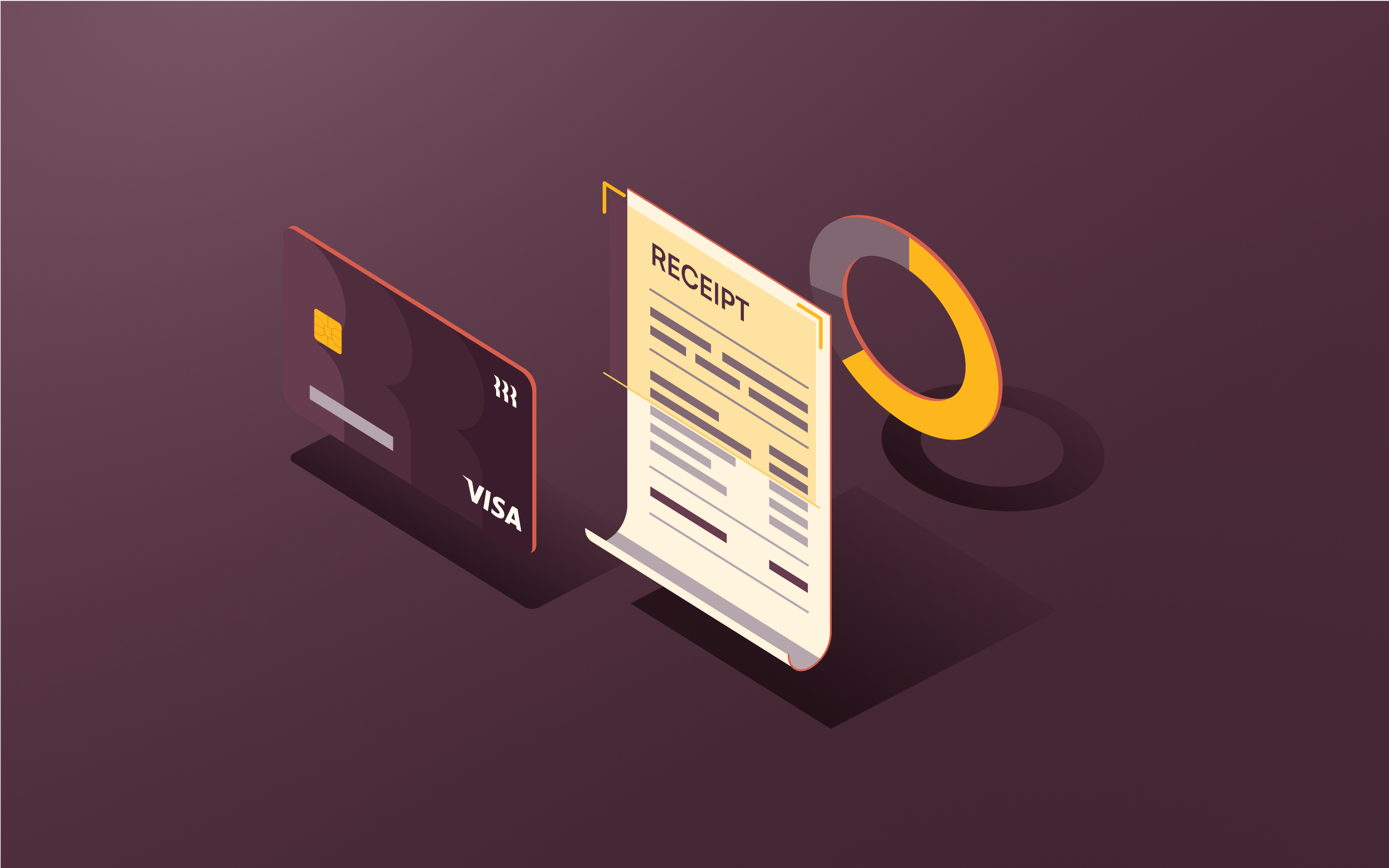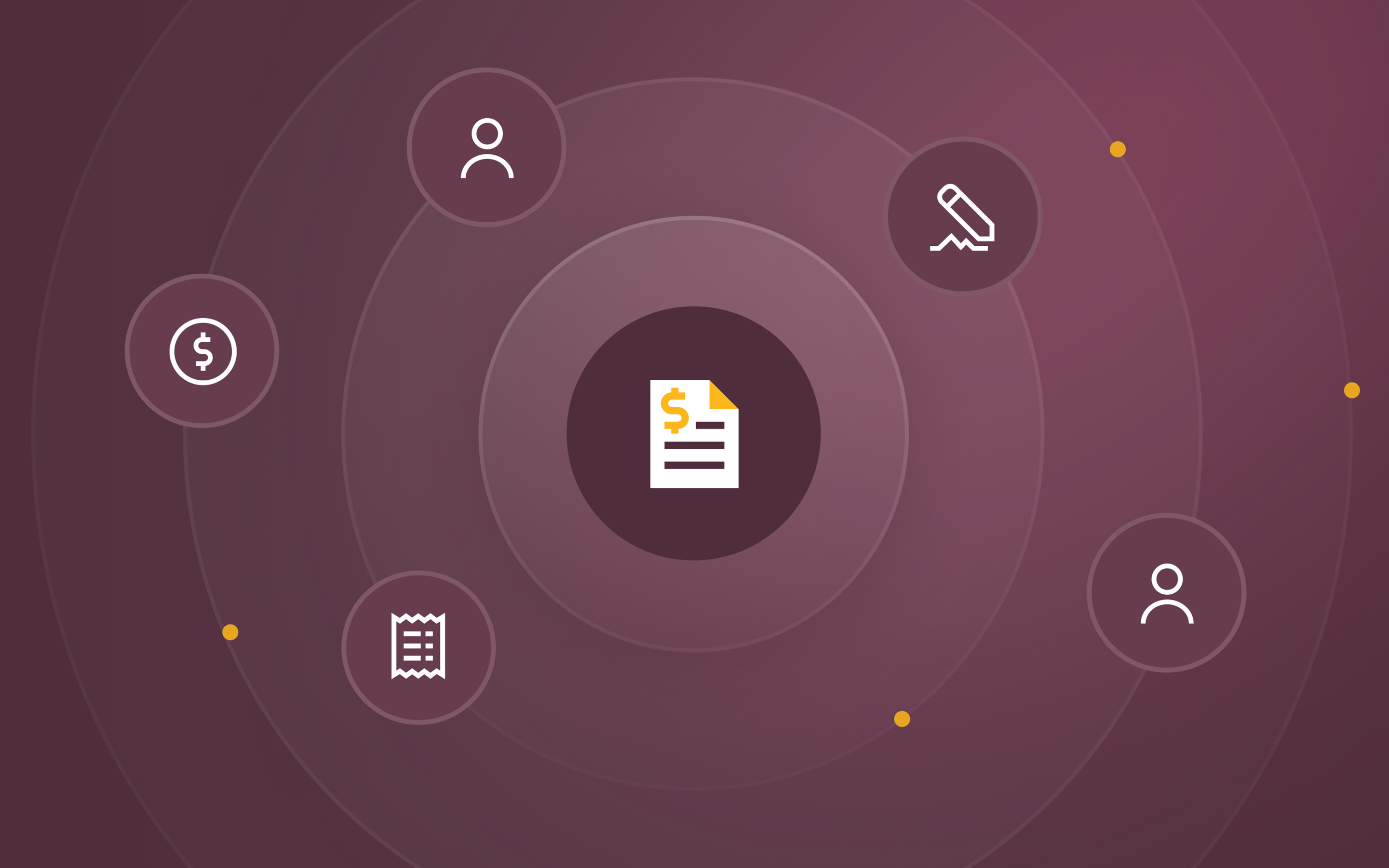The CFO software stack: Must-have tools for finance leaders

Today’s CFOs and their teams need to be meticulous bookkeepers, prescient forecasters, and masters of capital allocation. But the neverending slog of manual administrative work slows them down and hampers decision-making.
A versatile slate of SaaS tools can save the day. Companies that invest in the right software stack experience nearly three times a higher customer retention rate. And finance leaders can free up hours of valuable time that would otherwise be spent tying out the books, processing invoices, and matching receipts with expense reports.
Read on to figure out which tools most belong in a CFO’s software stack and how to make the most of them.
Why is software important for CFOs?
The right tech stack gives finance leaders a comprehensive view into their companies’ finances, helping them make impactful strategic decisions. Here’s a look into the biggest benefits.
Save time on manual work
Cloud-based software can ease the administrative burdens of CFOs and other finance leaders by streamlining otherwise tedious accounting and cost management processes. In fact, according to a Rippling survey, 44% of finance leaders say their teams spend more than half their time on admin tasks.
But with the right tools, you can automate approval workflows to route expense requests to the right approvers, sync approved transactions to your general ledger, and automatically send corporate cards to eligible new employees during onboarding. You can also save time manually poring through receipts during reconciliation and become less reliant on opaque spreadsheets that require constant upkeep.
Bolster compliance
Finance tools can help CFOs adhere to generally accepted accounting principles (GAAP), keep up-to-date records in case of internal or external audits, and enforce employee spend policies by blocking unauthorized transactions or expense reimbursements.
Improve visibility
A versatile tech stack can also help finance teams track cash flow and see how their different buckets of spend—from payroll to bill payments, expense reimbursements, headcount planning, and more—interrelate. This helps CFOs build customizable, plug-and-play reports, allowing them to better evaluate their company’s financial health.
Accurate budgeting and forecasting
Software automations can help CFOs stay up-to-date on all a company’s financial transactions and set realistic budgets tailored to the unique needs of different departments. You can also use the employee and financial data within different software products to track monthly spend, determine metrics like the average cost per new hire, and report on other costs to stick to predetermined budgets and forecast your company’s future needs.
Boost employee morale
Nearly 60% of finance leaders list recruiting and retaining skilled talent as a top priority for 2024. One of the best ways to attract stellar team members is to have a software stack that spares headaches and saves time. Platforms that help quickly close out the books or let finance leaders easily collaborate with colleagues across departments can be the difference-maker in finding and keeping top-tier employees.
Key features of CFO software
When weighing which finance solutions belong in your tech stack, look out for these critical characteristics.
Automation
Software that does administrative work on your finance team’s behalf—like flagging mismatched receipts in expense reports and blocking out-of-policy vendor transactions—can save time and protect against employees misusing company funds. And if your finance tools are linked to other workforce management processes—like onboarding and payroll—you open the door to more robust automation capabilities.
Security
Nearly four in 10 finance leaders list cybersecurity threats as a primary challenge with financial management technology. Look for solutions that protect sensitive workforce data with enterprise-grade security and regular audits.
Also keep in mind that while a CFO needs visibility over an entire organization’s spend, individual departments heads and employees likely need more limited access. With this in mind, seek platforms that let you assign granular role-based permissions—so that the right people have access to the right information.
Scalability
Think about your workforce needs now and your future business growth as you scale. If you envision expanding your global footprint and hiring or working with vendors in international markets, some solutions let you automatically pay in local currency—so you don’t have to worry about conversions.
Also, while budgeting and headcount planning within Google Sheets or Microsoft Excel may suffice for fledgling small businesses or startups, you’ll likely benefit from software with better reporting and automation capabilities as you grow and your financial picture becomes more complex.
Integrations
While some SaaS tools may perform a couple finance functions well, standout solutions work in sync with other systems in your tech stack. In your search for platforms best fit for your spend management needs, take stock of options with a bevy of integrations with third party apps that let you, for instance, sync expense reimbursements to your accounting software.
8 essential software tools for CFOs
The software capabilities below empower finance teams to make strategic spend decisions.
Accounting software
- What it is: Businesses need to keep accurate, real-time records of every transaction. Instead of managing mountainous file folders of invoices, receipts, and expense reports, accounting software—like QuickBooks, NetSuite, or Xero—digitizes the bookkeeping process, giving finance teams a cloud-based, centralized hub of all their company’s debits and credits.
- How it helps: Accounting tools can help transaction data remain accurate, secure, and easy to access for compliance needs. And instead of combing through file cabinets or spreadsheets, accounting teams can assess receivables, payables, and other spend data from a user-friendly dashboard.
- Features to look out for: Customizable financial reporting capabilities, international currency support, integrations with other finance tools, and access permissions for different types of users.
Expense management
- What it is: Expense management software helps finance teams review, reimburse, and record employees’ job-related purchases.
- How it helps: Manual expense management can be fraught with long delays and costly errors. Instead of carefully reading flimsy paper receipts to ensure dollar amounts match reports, expense management platforms can let employees quickly upload receipts and electronically submit reports, make the reconciliation process easier for finance teams, and automate approval chains for managers.
- Features to look out for: General ledger sync, automated compliance enforcement, customizable approval chains, automatically flagging duplicate transactions or mismatched receipts.
Bill pay
- What it is: A SaaS tool that helps companies manage, track, and pay all their vendor bills from a single platform.
- How it helps: Bill pay software streamlines the invoicing process by letting you upload bills and auto-capture their details. You can also schedule recurring and one-time payments, choose which accounts to pay from, and give suppliers a platform to add up-to-date billing information.
- Features to look out for: Multi-currency capabilities, general ledger sync, customizable approval chains, auto-paying recurring bills.
Corporate card management
- What it is: A solution that lets you issue, manage, and revoke corporate cards employees use to make business-related purchases.
- How it helps: While corporate cards can help employees make necessary purchases for travel, supplies, vendor subscriptions, and other business expenses, doling them out with no strings attached can be dangerous. A software-based card management solution allows you to set customizable spend limits and purchasing restrictions based on an employee’s role, automatically blocking out-of-policy card use.
- Features to look out for: Permissions based on employee attributes, automated policy enforcement, card rewards programs, automated card issuance during onboarding.
Human Resources Information System (HRIS)
- What it is: A platform that helps a company manage and organize its workforce. An HRIS centralizes employee data like compensation information, contact information, start date, department, and more.
- How it helps: This solution can streamline HR tasks like time and attendance tracking, benefits administration, performance management, and more. While typically thought of as a system for HR teams, the right kind of software can connect its data to finance systems—allowing CFOs to assess payroll costs, plan headcounts, set departmental budgets, and more.
- Features to look out for: Global payroll, automated onboarding, compliance monitoring, time and attendance tracking.
Payroll processing
- What it is: A solution that helps you pay employees (and contractors) while automatically making the necessary tax deductions and adjustments based on leave or hours worked.
- How it helps: Payroll is typically a company’s biggest expense. A standout payroll processing tool not only lets you quickly and compliantly compensate your entire workforce; it also helps finance leaders pull reports of total employer cost, gross pay, and other data that helps you control company spend.
- Features to look out for: Global currency capabilities, automated compliance monitoring, automatic tax calculation and deduction.
Headcount planning
- What it is: A platform that allows companies to set hiring goals, track open roles, set compensation bands to ensure managers offer appropriate salaries, and align finance teams with recruiters, department heads, and HR professionals on headcount strategies.
- How it helps: Headcount planning software saves finance teams time tracking job availability by location, start date, and cost. You can also chart target headcount against current headcount—allowing CFOs to accurately forecast costs while managers work to fill needed skills gaps.
- Features to look out for: Customizable approval chains to block or greenlight new hires, compensation bands, role-based access permissions.
Financial Planning & Analysis (FP&A)
- What it is: Platforms that help companies set budgets, forecast future costs, and build reports to assess a company’s financial health.
- How it helps: Accurate financial planning helps CFOs adapt to market and workforce changes, keep costs within budget, and make decisions that bolster their company’s profitability.
- Features to look out for: Role-based access permissions, consolidation of different types of company spend, data aggregation across different software systems.
The problem with software sprawl
While the above tools are vital for CFOs keen on controlling costs and deciding how to allocate capital, having separate software solutions for every process can slow them down.
When your financial picture is scattered across dozens of unintegrated systems, teams struggle tracking down the right approvers for expenses, coordinating across departments to ensure headcount is within budget, and assessing total cash burn across every different spend bucket. And when finance and HR processes are siloed, teams play catch-up seeing how workforce changes—like hires, departures, and org chart reshufflings—impact costs. They also toil through constant manual data entry to reconcile disparate platforms.
In fact, four in 10 finance leaders say that a lack of interoperability between existing systems is a primary challenge in adopting and integrating new financial technologies.
Consolidating your tech stack into one platform
CFOs need a wide range of software tools to accurately manage their company’s finances, but too many siloed systems make accurately managing finances tricky.
The only way to escape this dreaded Catch-22 is with an all-in-one workforce management solution. In addition to integrating with third-party accounting software like QuickBooks and FP&A software like Tableau, Rippling consolidates all of your company spend—expense reimbursements alongside vendor bills, payroll, and corporate cards.
Our interoperable platform can also use employee data as the single source of truth that unifies finance and HR processes. With Rippling, you have unprecedented control over spend alongside the capability to hire, manage, and pay your entire workforce.
Disclaimer: Rippling and its affiliates do not provide tax, accounting, or legal advice. This material has been prepared for informational purposes only, and is not intended to provide or be relied on for tax, accounting, or legal advice. You should consult your own tax, accounting, and legal advisors before engaging in any related activities or transactions.










